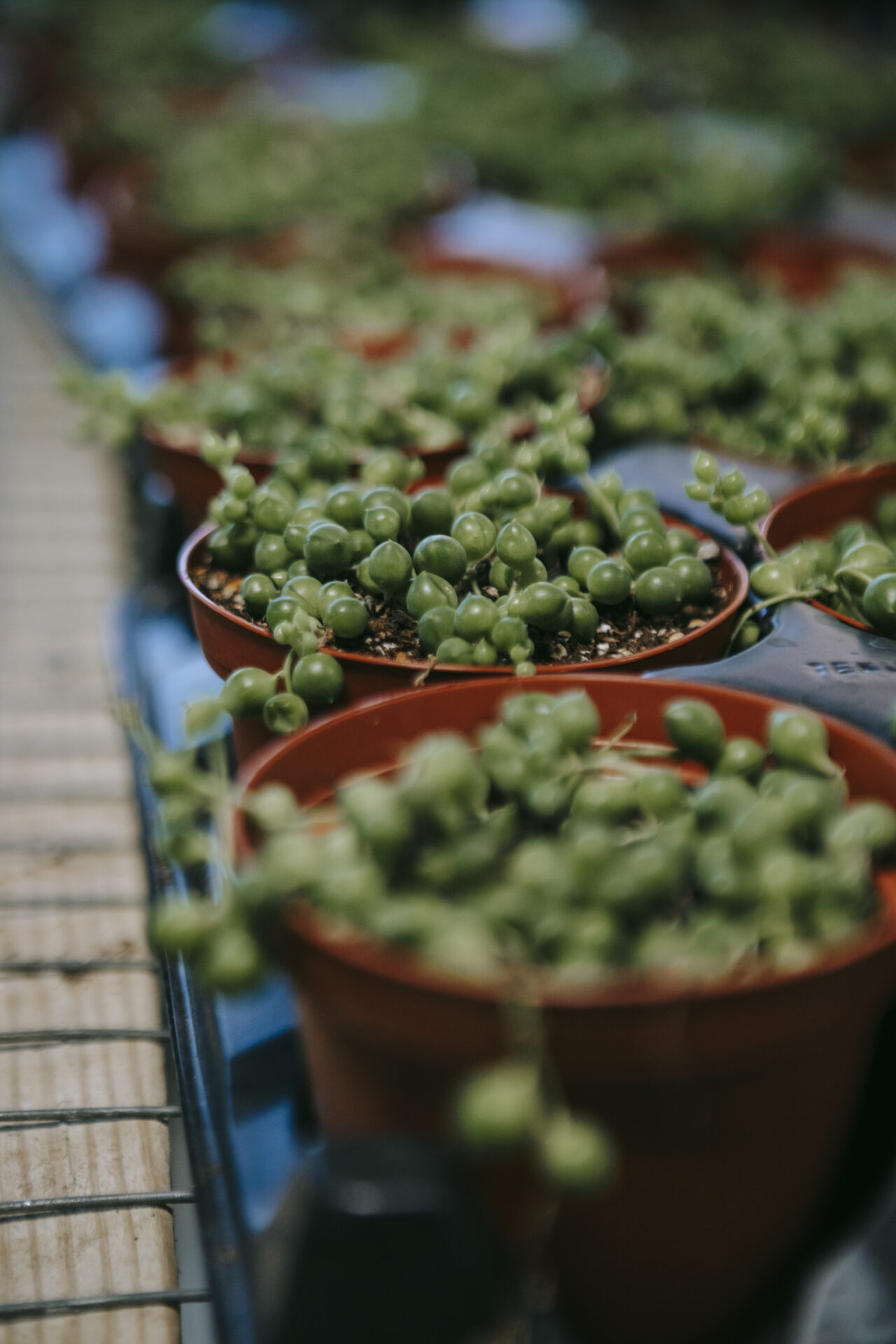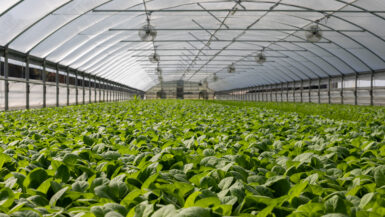The Science Behind Indoor Vertical Gardening: A Comprehensive Exploration
As urbanization grows and space becomes increasingly limited, the need for innovative agricultural solutions is more critical than ever. One such solution that is gaining traction is indoor vertical gardening. This method of cultivating plants maximizes space usage and provides a sustainable and controlled environment for year-round growth.
This article will delve into the science behind indoor vertical gardening, exploring its core principles, the technological advancements facilitating its success, and the environmental benefits this revolutionary approach offers. Join us as we embark on an informative journey to uncover the intricacies of this modern horticultural practice and how it is reshaping the way we think about agriculture and food production.
Climate Control and Environmental Factors
A vital aspect of indoor vertical gardening is the ability to regulate the growing environment meticulously. This section will delve into the importance of climate control and the various environmental factors that influence the success of this innovative gardening practice. We will also discuss avoiding common mistakes associated with indoor vertical gardening, ensuring optimal plant health and yield.
The Role of Temperature and Humidity in Indoor Vertical Gardens
Temperature and humidity play significant roles in plant growth and development. Maintaining an ideal temperature range specific to each plant species is crucial for their overall health and productivity. Growers can regulate these factors in indoor vertical gardens using automated heating and cooling systems.
Similarly, controlling humidity levels is essential to prevent mold growth and plant diseases. Growers can maintain an ideal balance by using humidifiers and dehumidifiers, promoting a healthy growing environment.
Lighting: The Powerhouse of Plant Growth
One of the most critical factors in indoor vertical gardening is providing sufficient light for photosynthesis. Artificial lighting, such as LED grow lights, allows for precise control over the light spectrum and intensity, ensuring optimal growth and yield. These energy-efficient lighting solutions also enable growers to cultivate plants regardless of external weather conditions or seasonality.
CO2 Enrichment: Boosting Plant Growth and Yield
Carbon dioxide (CO2) is a vital component of photosynthesis, and its availability greatly influences plant growth. CO2 enrichment systems, which increase the CO2 concentration in the growing environment, can benefit indoor vertical gardens. These systems stimulate faster growth and higher yields.
Smart Monitoring and Automation
Incorporating innovative monitoring systems and automation is key to maintaining a consistent and healthy growing environment. These technologies can monitor various environmental factors, such as temperature, humidity, light, and CO2 levels, and adjust them accordingly.
Furthermore, they can help detect potential issues early, allowing growers to take corrective action and avoid common indoor vertical gardening mistakes. For more information on these mistakes and how to prevent them, you can read “Common Indoor Vertical Gardening Mistakes to Avoid.”
As we have discussed, climate control and environmental factors play a critical role in the success of indoor vertical gardening. By carefully managing these variables and utilizing modern technology, growers can achieve optimal plant health and productivity, contributing to the sustainability and efficiency of urban agriculture.
Lighting Solutions for Optimal Plant Growth
A well-thought-out lighting strategy is essential for the success of any indoor vertical garden. This section will discuss various lighting solutions that can significantly impact plant growth and productivity. From understanding the importance of the light spectrum to exploring energy-efficient options, we will delve into the world of artificial lighting and its role in indoor vertical gardening.
The Light Spectrum: From Photosynthesis to Morphogenesis
Plants rely on different wavelengths of light for various growth processes. Blue light is essential for photosynthesis, while red light plays a crucial role in morphogenesis, including flowering and fruiting. A proper balance of blue and red light is necessary for optimal plant growth, and by using artificial light sources, growers can tailor the light spectrum to meet specific plant requirements.
LED Grow Lights: Energy Efficiency and Customization
LED grow lights are fast becoming the go-to lighting solution for indoor vertical gardens. They offer energy efficiency, long life spans, and the ability to customize the light spectrum to suit specific plant needs. Additionally, they emit significantly less heat than traditional lighting options, making them ideal for temperature-sensitive plants and reducing the need for additional cooling systems.
Optimizing Light Distribution and Intensity
Ensuring proper light distribution and intensity across the entire vertical garden is critical to achieving uniform growth and maximizing yields. Carefully planned light placement and reflective materials can help achieve optimal light distribution. Moreover, growers can adjust the intensity of LED grow lights to cater to the specific light requirements of individual plant species.
Adding a Touch of Aesthetics
While functional lighting is essential for plant growth, the aesthetic appeal of an indoor vertical garden should not be overlooked. By incorporating visually appealing lighting solutions, you can enhance the overall appearance of your garden. For more ideas on how to add an artistic touch to your indoor vertical garden, check out our article “Ways to Enhance Your Indoor Vertical Garden with Aesthetic Appeal.”
In summary, a well-designed lighting strategy is crucial for the success of an indoor vertical garden. By utilizing energy-efficient LED grow lights, optimizing light distribution and intensity, and incorporating aesthetic elements, growers can create an environment conducive to optimal plant growth and productivity while achieving visual harmony in their indoor gardens.
Benefits of Indoor Vertical Gardening for Urban Spaces
Indoor vertical gardening has emerged as a popular and innovative solution for urban spaces with limited access to traditional agricultural land. By optimizing the use of vertical space and incorporating advanced technologies, this cultivation method has numerous benefits for urban dwellers, ranging from increased food security to improved air quality. In this subsection, we will explore the various advantages of indoor vertical gardening and how it revolutionizes urban agriculture.
Maximizing Space and Increasing Food Production
One of the most significant benefits of indoor vertical gardening is its ability to maximize space usage. By growing plants vertically, urban farmers can cultivate more per square foot, increasing food production. This is especially beneficial in densely populated cities where space is scarce, and the demand for fresh produce is high.
Reducing Food Miles and Carbon Footprint
Indoor vertical gardens can be established within urban centers, drastically reducing food miles – the distance food travels from farm to consumer. This, in turn, decreases the carbon emissions associated with transportation and contributes to a more sustainable food system. As a result, urban dwellers have access to fresher produce while minimizing their environmental impact.
Year-round cultivation and Food Security
The controlled environment of indoor vertical gardens allows for year-round cultivation, regardless of external weather conditions. This ensures a consistent supply of fresh produce, enhancing food security in urban areas. Moreover, growing diverse plant species throughout the year can offer urban dwellers a more varied and nutritious diet.
Resource Efficiency and Water Conservation
Indoor vertical gardens often employ advanced technologies such as hydroponics or aeroponics, which use significantly less water than traditional soil-based farming. These systems recycle water, reducing consumption and promoting more sustainable agricultural practices. Additionally, the controlled environment of indoor vertical gardens minimizes the need for harmful pesticides, further promoting resource efficiency.
Improving Urban Air Quality and Aesthetics
Plants are natural air purifiers, and their presence in indoor vertical gardens can improve air quality within urban spaces. They absorb carbon dioxide and volatile organic compounds while releasing oxygen, creating a healthier environment for city dwellers. Furthermore, the visual appeal of lush, vertical gardens can enhance the aesthetic value of urban spaces, transforming concrete jungles into vibrant, green oases.
In summary, indoor vertical gardening offers many benefits for urban spaces, addressing critical issues such as food security, sustainability, and environmental health. By embracing this innovative approach to agriculture, urban dwellers can enjoy fresher, locally-grown produce while contributing to a greener and more sustainable future.
Hydroponic Systems and Nutrient Management
As we delve deeper into the Science Behind Indoor Vertical Gardening, it is essential to understand the various cultivation techniques that can be employed in this innovative approach to agriculture. One such method that has gained significant popularity is hydroponics – the practice of growing plants without soil. In this subsection, we will explore the fundamentals of hydroponic systems, their advantages in indoor vertical gardens, and the essential aspect of nutrient management to ensure optimal plant growth and yield.
Understanding Hydroponic Systems: Soilless Cultivation
Hydroponic systems allow plants to grow without soil. Instead, they rely on nutrient-rich water solutions to deliver essential elements directly to the plant roots. Various types of hydroponic systems include nutrient film technique (NFT), aeroponics, and deep water culture (DWC). Each system has unique advantages and challenges, but all share the goal of providing a controlled and efficient growing environment for plants.
Advantages of Hydroponics in Indoor Vertical Gardens
The use of hydroponic systems in indoor vertical gardens offers numerous benefits. Some of these advantages include:
1. Water conservation: Hydroponic systems typically use less water than traditional soil-based methods, as they recycle water within the system.
2. Faster growth and higher yields: The direct delivery of nutrients to plant roots in hydroponic systems can accelerate growth and increase productivity.
3. Reduced disease and pest problems: The absence of soil eliminates many soil-borne diseases and pests, reducing the need for chemical treatments.
4. Flexibility and scalability: Hydroponic systems can quickly adapt to various scales, from small home gardens to large commercial operations.
Managing Nutrients: The Key to Hydroponic Success
One of the most critical aspects of hydroponic systems is nutrient management. Since plants do not derive nutrients from soil, growers must provide a balanced and complete nutrient solution to ensure optimal growth and development. Some essential factors to consider when managing nutrients in hydroponic systems include:
1. Nutrient formulation: A well-balanced nutrient solution should provide all the macro- and micronutrients required for plant growth. Growers can purchase pre-mixed formulations or custom-make them based on their specific plant needs.
2. pH management: The pH of the nutrient solution plays a crucial role in nutrient availability and uptake by plants. Regular monitoring and adjustment of pH levels are necessary to maintain an optimal growing environment.
3. Electrical conductivity (EC): EC measures the nutrient concentration in the solution. Monitoring and adjusting EC levels can help growers maintain the appropriate nutrient strength for their plants.
4. Nutrient monitoring and replenishment: The nutrient solution will deplete as plants absorb nutrients over time. Regular monitoring and replenishment of the solution are essential to ensure a consistent and adequate supply of plant nutrients.
By implementing a well-planned hydroponic system and effectively managing nutrients, indoor vertical gardeners can optimize their growing environment and foster healthy, productive plants. This soilless approach to cultivation conserves resources and offers flexibility and scalability, making it an ideal solution for urban agriculture and indoor vertical gardening. With a focus on efficiency and sustainability, hydroponics continues to pave the way for innovative and environmentally-conscious agricultural practices.
Plant Selection and Space Utilization
As we continue to explore the science behind indoor vertical gardening, it is essential to consider the role of plant selection and effective space utilization. Choosing the right plants for your indoor vertical garden can significantly impact its overall success, while thoughtful space utilization can maximize productivity and efficiency.
This subsection about the Science Behind Indoor Vertical Gardening will discuss the factors to consider when selecting plants, various space utilization techniques, and maintaining a thriving and well-organized indoor vertical garden.
Factors to Consider When Choosing Plants for Your Indoor Vertical Garden
Plant selection plays a crucial role in determining the success of an indoor vertical garden. There are several factors to consider when selecting the appropriate plants for your vertical garden, including:
1. Light requirements: Different plants have varying light requirements for optimal growth. Ensure that the plants you select are well-suited to the light conditions available in your indoor vertical garden.
2. Growth habit: Consider plants with a compact or trailing growth habit, as they are more suited to vertical spaces.
3. Environmental preferences: To simplify the overall maintenance of your garden, choose plants that thrive in similar temperature, humidity, and pH conditions.
4. Purpose: What is the primary goal of your indoor vertical garden? Select plants that align with your intended purpose for food production, air purification, or aesthetics.
Maximizing Space and Efficiency with Vertical Gardening Techniques
Effective space utilization is key to creating a successful indoor vertical garden, and there are various techniques to optimize the available space:
1. Stacking shelves or containers: Stacking shelves or containers makes use of vertical space, allowing for the growth of multiple plants in a limited footprint.
2. Modular systems: Consider using modular vertical gardening systems, such as vertical planters or wall-mounted pockets, which can be easily customized to fit your space.
3. Trellises and supports: Incorporate plant supports like trellises, cages, or netting to encourage vertical growth and provide structural stability for climbing plants.4. Succession planting: To ensure continuous production, practice succession planting by staggering the planting times of different crops and utilizing the space efficiently throughout the year.
Maintaining a Thriving and Well-Organized Indoor Vertical Garden
To ensure a healthy and aesthetically pleasing indoor vertical garden, regular maintenance and organization are essential:
1. Pruning and training: Regularly prune and train your plants to maintain their shape and size, encourage compact growth, and prevent overcrowding.
2. Disease and pest management: Monitor your plants for signs of disease or pests, and act promptly to address any issues. Promoting good air circulation and maintaining proper environmental conditions can help prevent many common problems.
3. Nutrient and water management: Regularly monitor and adjust your plants’ nutrient and water availability to ensure they receive the necessary resources for optimal growth.
4. Rotation and rearrangement: Periodically rotate and rearrange your plants to provide equal exposure to light and maintain a balanced and visually appealing display.
By carefully selecting plants well-suited to your indoor vertical garden’s conditions, employing effective space utilization techniques, and conducting regular maintenance and organization, you can create a flourishing and efficient garden that meets your needs and goals. Embracing these principles of the science behind indoor vertical gardening can help you overcome the challenges of limited space and contribute to the growing movement of sustainable urban agriculture.







Leave a reply